Nvidia came with its "Thor's Hammer"!2000TOPS computing power first hammer Qualcomm?
Author:Play Time:2022.09.22
"Enhance XX%compared to the previous generation"
Such propaganda, small to toothpaste to cars, may appear on various iterations of goods. This time, Nvidia compared the new products with another "quasi -new product".
To put it bluntly, Nvida rolled himself.
At last year's GTC2021, Nvidia released the NVIDIA Drive Atlan, an AI processor with a computing power of up to 1000TOPS, and is expected to be officially produced in 2024 and will be available in 2025.
However, before 2022, Nvidia denied itself. At the GTC2022 last night, Huang Renxun announced that Atlan is no longer the first. The new Thor chip will become the new brother in the autonomous driving chip with the computing power of 2000TOPS.
Of course, Nvidia's ambition in the automotive field is not just a "autonomous chip supplier", but in charge of the entire car.
One core is used more, maybe it's almost here
The integrated level of smart cars will become higher and higher. Higher integration can not only optimize the experience, but also reduce the manufacturing cost of the entire vehicle. According to Roland Berg's research report, domain control is the key to the development of smart cockpits. In the future, the smart cockpit domain will be combined with the smart driver's domain. In the end, the car central computer will further integrate the computing chip in the car.
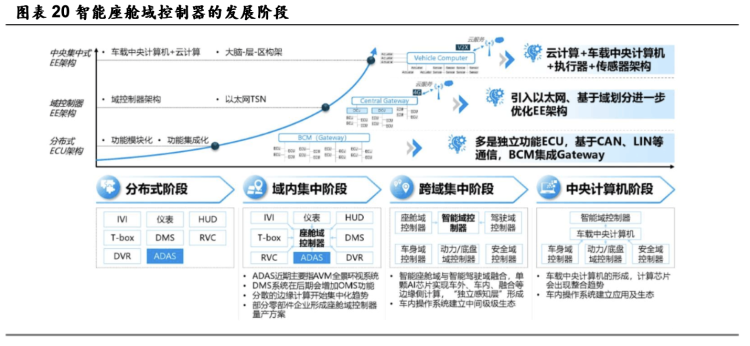
Photo source: Roland Berg
THOR's positioning conforms to this. It is not just a self -driving chip. One of the purpose of integrated ultra -high computing power is also to serve the AI calculation of the entire car. It can replace chips such as parking, autonomous driving and active safety, driver/passenger monitoring system, camera monitoring system, and entertainment system.

Picture source: Nvidia
In fact, from the Orin chip, Nvidia has announced the "one core" plan. Even if the Orin X chip has been on the car for nearly a year, why does the car company still use it as a chip that is driving automated?
It is believed that the reasons for driving may not even meet the computing power needs of driving automation in the near future or medium and long -term computing power needs in the first four points. A Orin X chip naturally has no surplus to share with other fields; second, in terms of software capabilities, currently various car companies may not have mature domain integration solutions. 3. In terms of security, although the design of the Orin chip is in line with ISO26262 "Road Vehicle Function Safety" international standards and has a safe island design, it takes time to verify whether it can meet the safety isolation of autonomous driving and other fields; fourth; fourth In terms of cockpit, Qualcomm has accumulated in the field of mobile devices for many years, and has occupied most of the rivers and mountains in the cockpit chip market. In addition, under the advantage of this preemptor, consumers have formed awareness and recognition of Qualcomm cockpit chips. Nvidia There is a certain difficulty to enter this field.
The THOR chip inherits most of the advantages of the series chips and has enhanced epic promotion. The necessary condition for "one core" is that the chip must support multiple systems. Orin and Thor both support Linux, QNX and Android. Generally, the entertainment information system of the vehicle uses Android, but the instrumentation and control of driving safety will use the linux system with higher stability. Taking the ideal ONE as an example, the model of this model uses the Qualcomm Snapdragon 820A chip and Android underlying system.
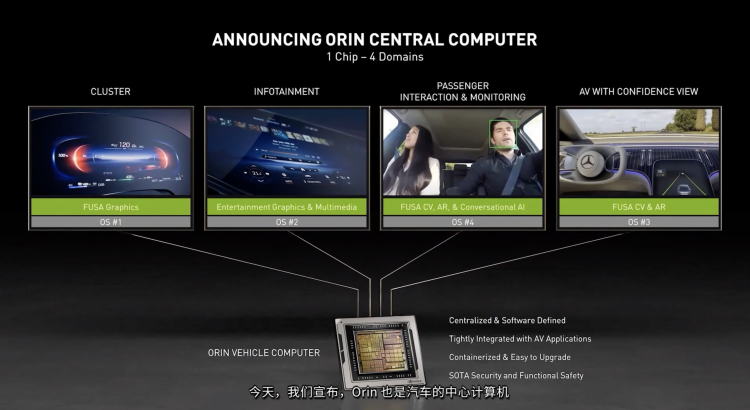
GTC2021 Picture Source: Nvidia
In terms of computing power, Nvidia said that due to more complex AI models, more and higher -resolution sensors to get on the car, the demand for computing power is also increasing. Therefore, the computing power of this chip will reach more than 2000TOPS and has a flexible distribution solution. Naturally, all 2000TOPS and 2000TFLOPS can be used for autonomous driving, or it can also be partially used to use the car and cockpit.
In terms of security, THOR's multi -computing domain isolation can provide concurrent multi -processes that are sensitive to time. Because it is unclear the specific design of the chip, if you consider the safety issues involved in one core, the chip should have a hard isolation scheme.
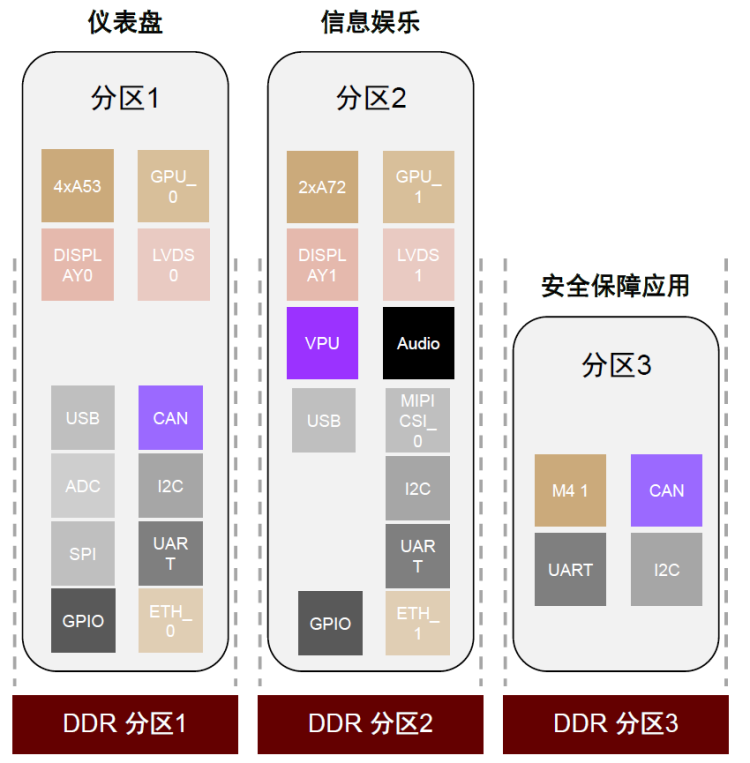
NXP I.MX 8 QM uses hardware partition. Source: NXP
Drive Thor will start mass production in 2025, while the starting brand is extremely high. In other words, perhaps in 2025, we will be expected to see smart cars with a higher level of integration.
In addition to hardware, Nvidia's software level is also online.
Training autonomous driving in the "Yuan Universe"
Another advantage of Nvidia is in the software. Many car companies and autonomous driving companies have to take the "full stack self -research" route. For these startups, if you want to land on the ground before the money is burned, it will need to be developed faster in development. Nvidia also provides services on software.
NVIDIA Drive provides a variety of software support. For example, the NVIDIA Drive SDK provides the construction block and algorithm stack required for autonomous driving, which contains multiple parts such as Drive OS, Driveworks, Drive AV. At the GTC2022 last night, Nvidia focused on Drive Sim. A AI workflow called Neurl Ronstruction Engine provided new support for Drive Sim. Under normal circumstances, it takes time and effort to create virtual training scenes for autonomous driving, and the scene is very limited and cannot achieve the purpose of sufficient training. However, through this new technology, only one information is required to collect information on the road, and the people, cars, things and other information on the road can be collected according to the sensor data, and a complete digital twin can be rebuilt within a few minutes.
Picture source: Nvidia
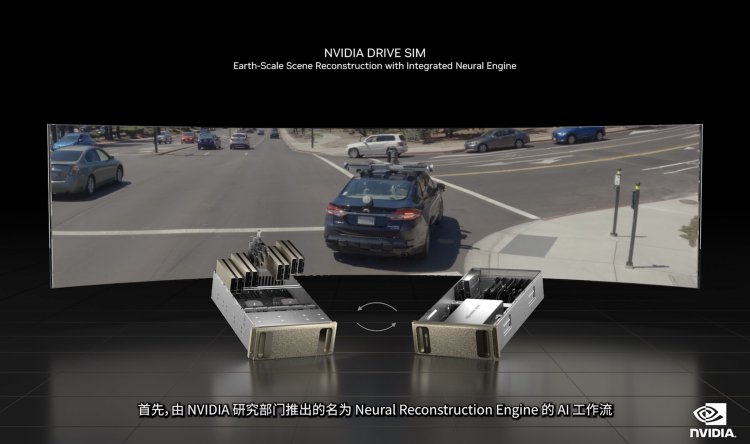
In the simulation scenario, this system can generate a variety of extreme scenes (such as ghost probes). With Drive Map, developers can generate a set of desired training routes and scenes.
In popular terms, autonomous driving training that used to obtain a large amount of data on the road before is now practicing in the "Yuan Universe".
Drive SIM can also achieve real -time hardware in the ring, and generate real -time radar simulation data and real -time multi -sensor simulation data. It can be said that it is almost the same as real training.
Picture source: Nvidia
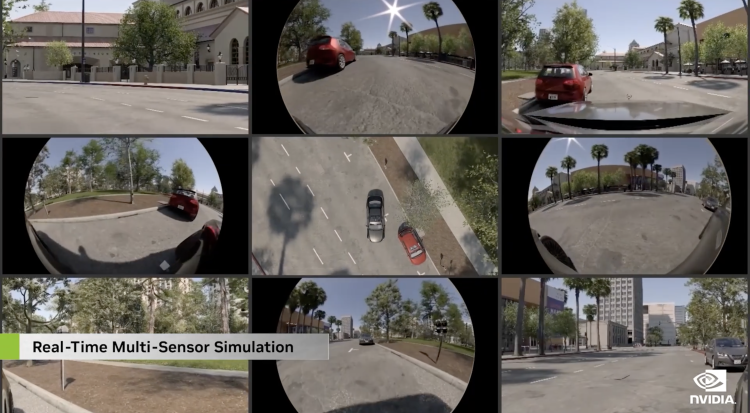
Behind this technique is Nvida's Omniverse for support. Omniverse is a real -time graphic collaboration platform developed by Nvidia, which can generate digital simulation to achieve 3D design collaboration and other functions. On the GTC last year, the "virtual Huang Renxun" of about 15 seconds has caused heated discussions, and the true effect with falseness is also from the Omniverse platform.
"Virtual Huang Renxun" on GTC2021 Source: Nvidia
The competition is more intense, and the chip war is touched immediately
The development of an industry will inevitably experience this road in the field of smart vehicles. In the early days of the traditional era to the era of smart cars, with the continuous expansion of intelligent demand, the MCU required by vehicles will rise rapidly. But after the next stage, the number of MCUs will enter the decline stage and gradually be replaced by SOCs with higher capabilities. Even the car machine chips and autonomous driving chips will be combined into one.
Qualcomm and Nvidia, which may be able to interfere with each other in the car, will also become an enemy. In recent years, Qualcomm has also released Snapdragon digital chassis and autonomous driving chips in the fields of vehicles. In this way, the road of large factories, maybe the road of some small factories may be more difficult to go.
- END -
The opening of the optoelectronics chip sealing and testing platform enables

The calculation speed is about 1,000 times faster than the electronic chip, but th...
One picture understands | Do you know about manual rainfall?

Figure Zhang Jin text organized Xin Xiaoying Chen Yingzhi